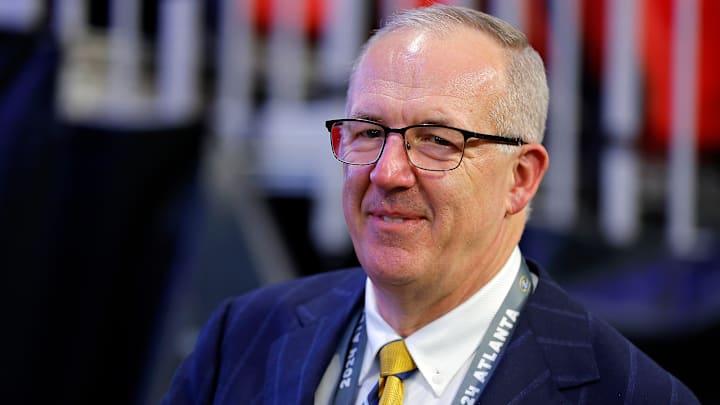The landscape of college football is shifting beneath our feet — and if coaches like Dabo Swinney are right, we may be approaching a total reset.
The idea? A college football super league made up of the top 40 to 50 programs in the country. A structure that looks a lot more like the NFL — but still maintains the core of what makes college football special.
But how would it work? And where does a program like Kentucky fit into this new world?
🏈 The super league concept: What is it?
The super league idea has been gaining steam behind the scenes for years. Recent proposals, backed by university presidents and even venture capital firms, suggest bundling the most powerful football programs into a new, unified business model. This league would:
Be separate from current conferences like the SEC or Big Ten
Be driven by television viewership, brand strength, and revenue potential
Likely consist of 40 to 50 programs, handpicked based on performance, history, and marketability
Possibly return to regional scheduling, cutting down on cross-country travel
Mimic the NFL in structure, with crossover matchups and better revenue sharing
Swinney, Clemson’s national championship-winning head coach, believes it’s inevitable.
“It’s not sustainable the way we are. It’s just a matter of time,” Swinney said. “Eventually money’s going to win the day.”
Years ago the biggest soccer clubs in the soccer world in Europe met in secret and tried to breakaway to form their own league. Think Real Madrid vs Manchester City as a league game, not just a cup tie. That means the best play the best, but what happens to the fairy tales like Leicester City winning it all? It goes away.
So fans revolted, and the league never came to fruition. Will that happen to college football? Maybe, but there are other questions we have to ask as well.
💵 Why Is This Happening?
The traditional college football model is under pressure from all sides:
- NIL deals and the looming House settlement are creating massive new expenses
- TV contracts drive the bus, and top brands are demanding bigger slices of the pie
- Programs like Florida State and Clemson are suing their way out of conferences
- There’s increasing pressure for schools to pay players directly
In short, everyone’s chasing sustainability — and profitability. A super league could allow elite programs to pool resources, negotiate mega TV deals, and stabilize the sport’s future.
🧭 So… where does Kentucky fit in?
That’s the million-dollar question.
Kentucky is a proud member of the SEC — one of the two power conferences that would form the backbone of any super league. But the Wildcats aren't Alabama or Georgia. So where do they land in a 40- to 50-team cut?
Here’s why Kentucky could still be in the mix:
📺 TV market: The Wildcats bring the Lexington and Louisville markets, and benefit from strong SEC TV viewership.
🏟️ Facilities and investment: UK has invested heavily in football infrastructure and support, including Kroger Field renovations and NIL resources.
📈 Recent success: Under Mark Stoops, Kentucky has made consistent bowl appearances and competed in the top half of the SEC.
🎓 Academic reputation: A super league would still be tied to universities — and UK is a flagship institution with strong academics.
The concern? If a super league is purely brand- and revenue-driven, Kentucky could be on the bubble — just outside the top tier, unless the model makes room for strong “rising” programs with room to grow.
🗓️ When could this happen?
The timeline isn’t set, but the next major shakeup could come around 2031, when key media rights deals expire and teams like Clemson and Florida State may be free from current conference restrictions.
Until then, proposals will keep circulating — and schools will keep jockeying for position.
⚖️ The bottom line
A college football super league could redefine the sport — aligning the top programs under one roof with NFL-style structure and billion-dollar potential.
For Kentucky, the path forward means winning, investing, and staying relevant. The Cats are positioned better than many mid-tier programs, but they’ll need to keep building their case — on the field and off — to earn a seat at the super league table.
